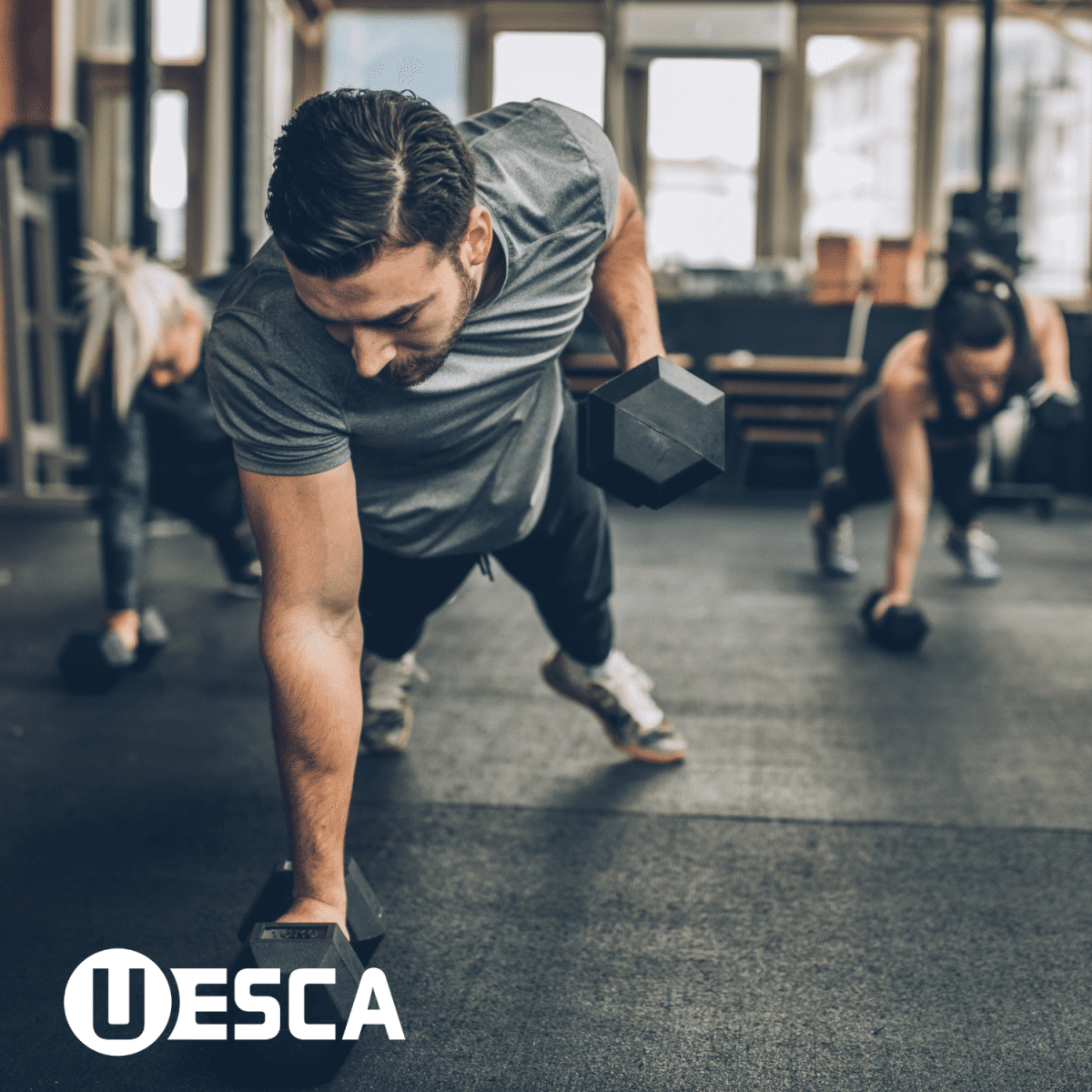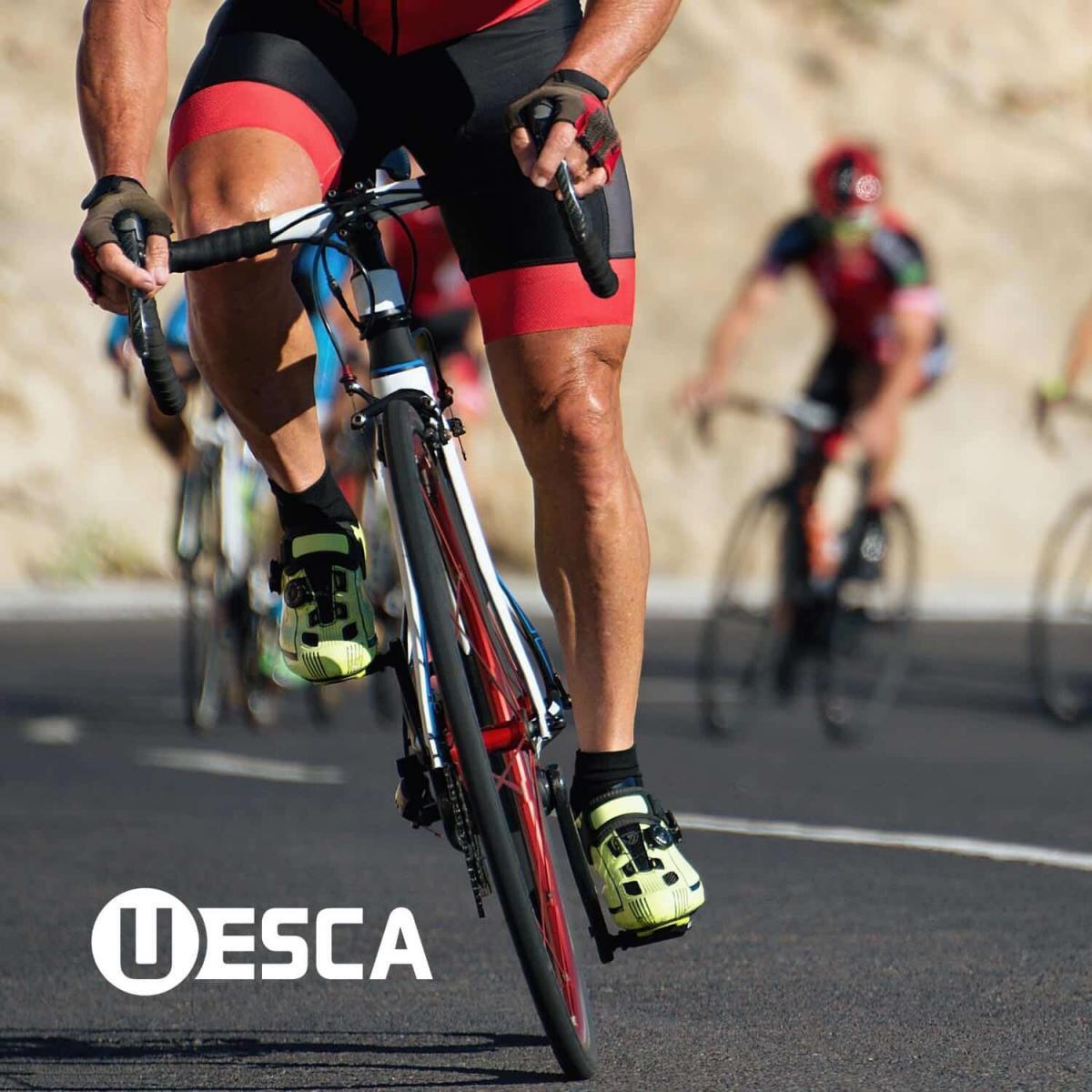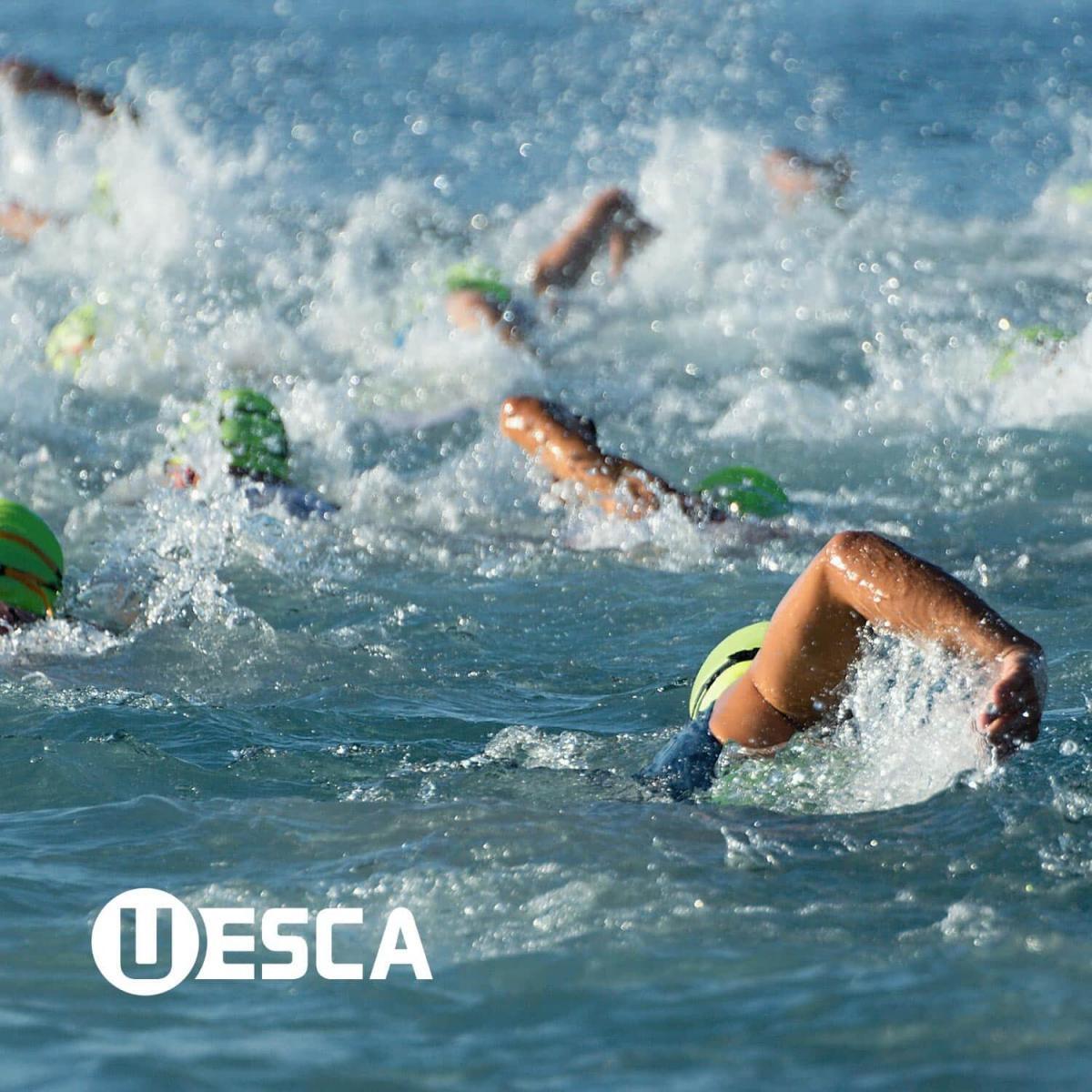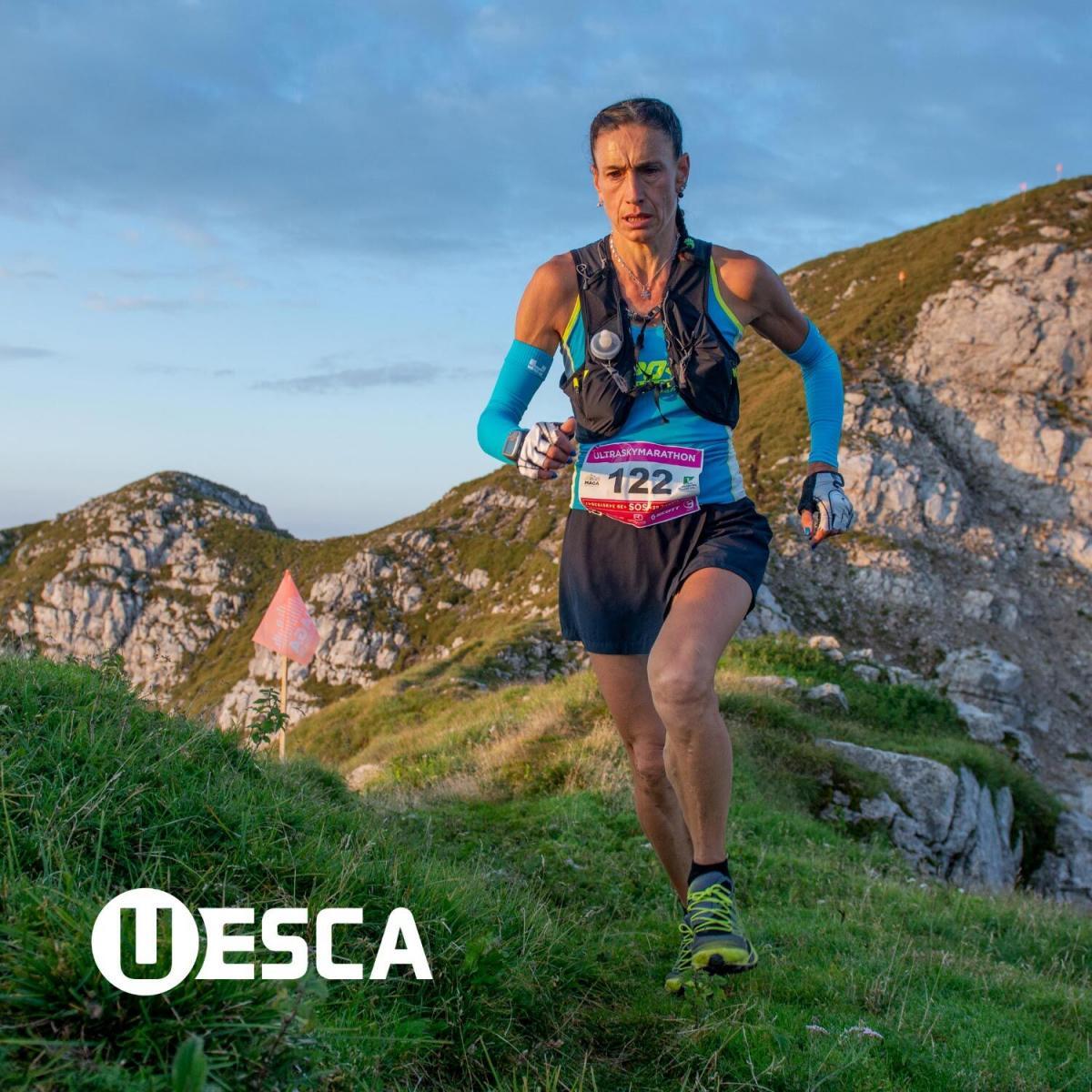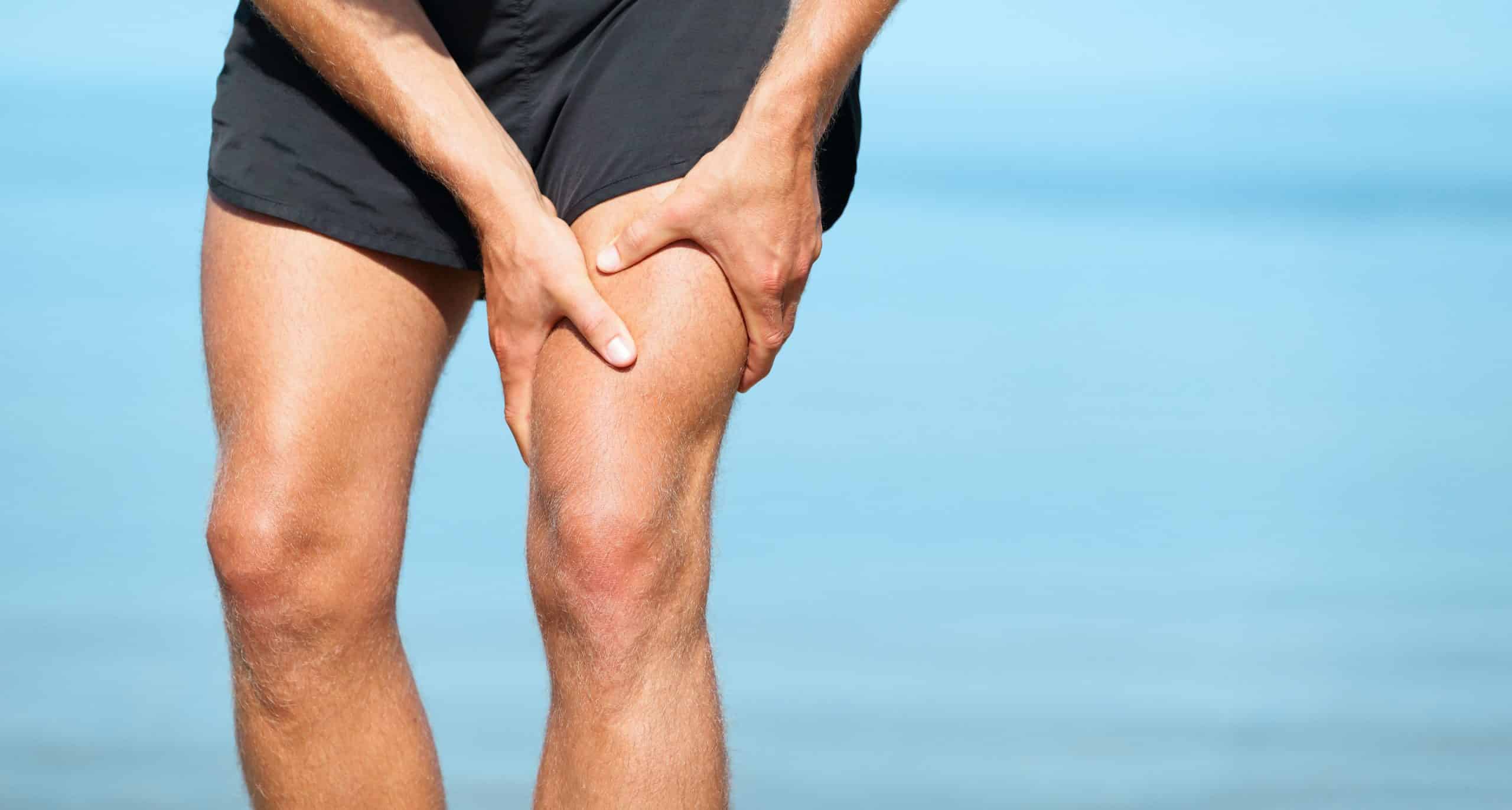
We’ve all been there. You get back from an awesome run, feel healthy and energized, have a nice dinner, go to sleep and then @$*%#!… you can barely make it down the stairs the next morning (and the morning after that) because it feels like someone shortened your hamstrings by about an inch and then set them on fire!
Ah yes, the ever so fun experience of Delayed Onset Muscle Soreness (DOMS).
DOMS is most associated with upping the volume/intensity or performing a new exercise.
A (Very) Brief History
While DOMS has obviously been making athletes’ lives painful for many many years, it wasn’t until 1981 that the origin was discovered. In 1981, Jan Frieden published his findings that were based on taking muscle biopsies from subjects who walked repeatedly down flights of stairs. This was the first real evidence of what DOMS is and what it is not.
Jan Frieden discovered that DOMS primarily results from eccentric contractions of muscles.
What Is an Eccentric Contraction?
Great news! Now what the heck is an eccentric contraction?
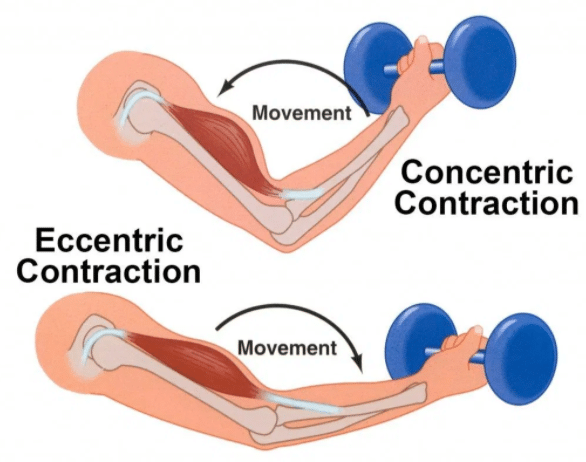
Source: https://www.ebtofficial.com/build-muscle/eccentric-vs-concentric/
Most of the time, when we think about a muscle contraction, we think of a muscle shortening (termed: concentric contraction). However, an eccentric contraction is the exact opposite. As illustrated above, during an eccentric contraction, a muscle(s) is lengthened to decelerate a limb that has a load applied to it. Essentially, an eccentrically contracting muscle acts as a brake. For example, after performing a bicep curl, the bicep muscle must contract to decelerate the weight on the way back down to the starting position (arm extended downward).
In respect to running, the three most common areas of DOMS are the hamstrings, calves and quadriceps.
- Hamstrings: During the forward aspect of the gait cycle (before the foot strikes the ground), the hamstrings act to decelerate the lower leg to avoid hyperextension. The faster the stride rate and/or longer the forward aspect of one’s stride length is, the greater the stress is upon the hamstrings.
- Quadriceps: Hands up – any ultrarunners here? If so, you know how much abuse your quads take on long descents. The quads act as brakes upon footstrike to minimize the chance of you falling on your face or hurtling down a mountain at breakneck speeds!
- Calves: Anyone that has ever tried to convert to a midfoot strike from a heel strike will likely experience some degree of DOMS on their calves – specifically the soleus muscle. This is because when a runner lands on the balls of their feet, the soleus acts to not only stabilize the foot, but as a brake to lower the heel to the ground.
Why Does It Cause Damage?
There are multiple reasons and theories why eccentric contractions cause us to want to stay in bed for a few days after a hard workout.
- The muscle fibers get pulled under stress lengthwise to the point where damage occurs at a sub-cellular level. This damage induces an inflammatory response of a muscle.
- The most current research points to damage to the excitation-contraction (E-C) coupling system as being responsible for 75% of the decline in muscle tension. This is why during a bout of DOMS, even if you can withstand the pain, you can’t exert the same amount of force as you normally could. The E-C coupling system is essentially the link between nerves and muscles. The core of this ‘junction’ is the sarcoplasmic reticulum, a structure found within muscle cells which determines if a muscle contraction occurs or not based on if calcium is released.
- Lastly, eccentric contractions involve fewer motor units than concentric contractions to elicit the same force production. Therefore, during an eccentric contraction, there is greater stress per muscle fiber than during a concentric muscle contraction. This added stress per muscle fiber may contribute to DOMS because of disruption of the myofibrillar structures of the muscle. This is akin to also having to do the job of your slacker co-worker – nobody likes to be overworked, including your muscle fibers!
Passive Tension
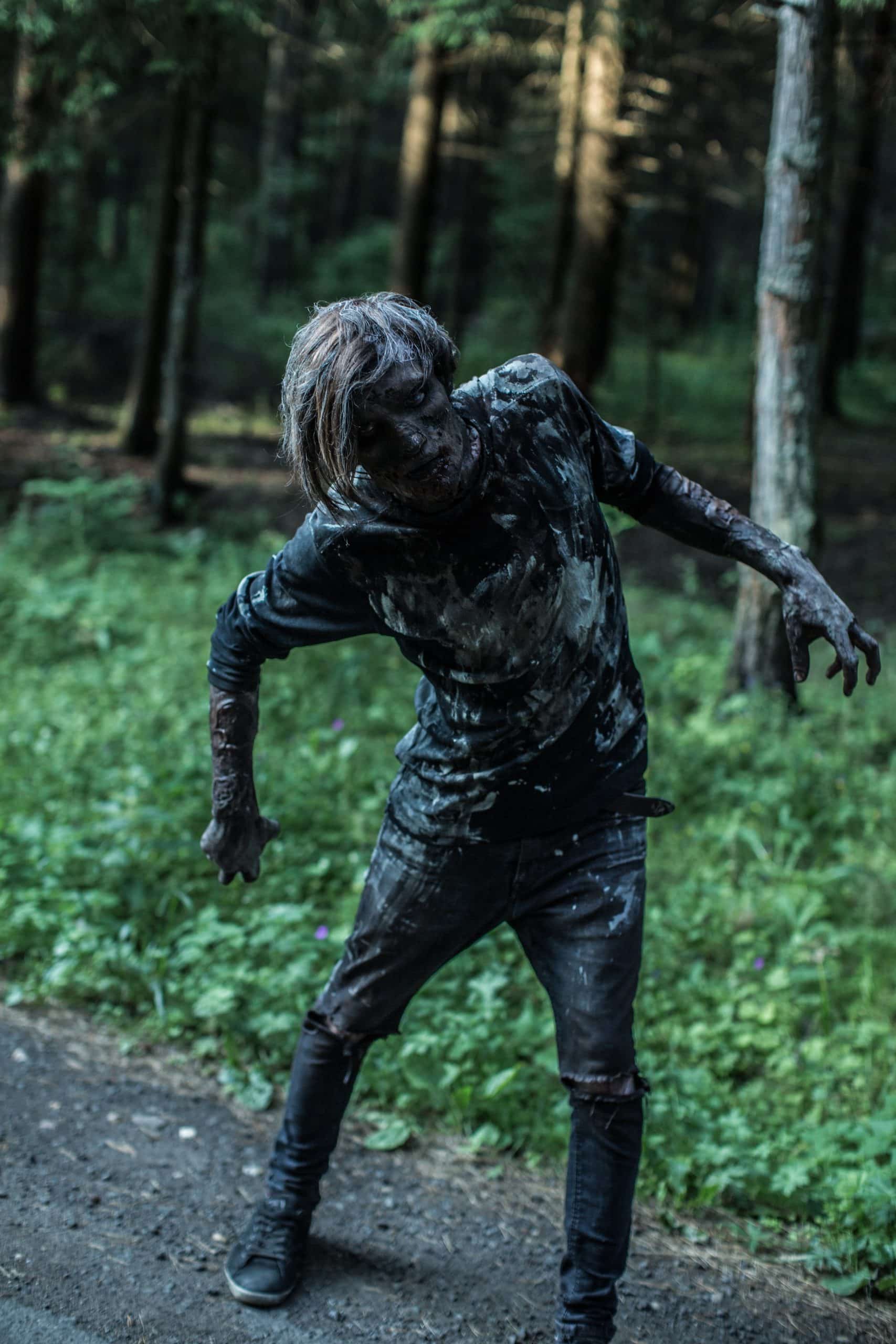
Passive tension relates to tension on a muscle that is not caused by a voluntary muscle contraction. This term is more appropriately termed, “stiffness.” This why you walk around like a zombie during a bout of DOMS, because your affected muscles are stiff… and likely painful! In a 1993 study by Howell et al., muscle stiffness doubled after the DOMS inducing workout and stayed that way for 4 days post-exercise.
A 2001 paper by Proske and Morgan state that DOMS may also act as a protective mechanism against muscle injury, by limiting one’s ability to exercise immediately post-DOMS.
Swelling and Soreness
Swelling of a DOMS-affected area(s) often accompanies the pain and stiffness. The most current research suggests that this inflammation is caused by damage to sarcomeres (the contractile unit of a muscle fiber), as well as possibly the death of muscle fibers. This inflammation response to injury is also theorized to be accompanied by oedema (fluid build-up).
How Long Will It Suck?
The question that you’ve been waiting for! Based on research by MacIntyre et al, and Jones et al., DOMS-related soreness begins to set in 6-8 hours after the workout/exercise and peaks at around 48 hours post-exercise. Now you have an excuse to binge on that Netflix show that you’ve been wanting to watch!
What Can I Do To Make It Go Away?
Given the discomfort level of DOMS, it’s unsurprising that a fair amount of research has been done regarding how to lessen the negative effects of DOMS. Based on a number of studies, exercising at a low intensity level, and ideally using muscles other than those affected by DOMS – or at least in a different range of motion is advised. This can help increase blood flow to the affected muscle(s). Secondarily, massage has been found to also help in reducing the time course of DOMS. However, as you might have experienced, even touching a DOMS affected body part can feel like a dagger. Therefore, the exact pressure and type of massage utilized will likely vary from person to person and will also likely determine if the massage is helpful, or hurtful.
Based on research by Smith et al., stretching did not improve recovery time or pain levels.
Lastly, it is strongly advised not to take NSAID’s such as ibuprofen, as this can hinder the healing process. Therefore, the best course of action when dealing with DOMS is light, active rest and possibly a light massage until the swelling/stiffness/pain has subsided.
Good News!
Like most other aspects of physiology, the body adapts to stress. In respect to DOMS, subsequent bouts of exercise (after allowing the body to recover from the initial DOMS episode) utilizing the same muscle(s) while performing the same volume/intensity will typically result in a lessened DOMS response (~ 1 week later). While there is conflicting data as to why this occurs, the primary reasoning is an increase in sarcomeres in affected muscle fibers.
This means that while the initial bout of DOMS is highly unpleasant, it sets the stage for the muscle(s) to adapt to future eccentric stress and therefore, less pain and lack of range of motion.
How To Mitigate DOMS
As noted earlier, the degree to which DOMS sucks is highly correlated with the degree that one ups the volume/intensity, or is performing a new exercise/movement.
Therefore, the best way to minimize the effects of DOMS is to gradually and incrementally scale the intensity and volume of a particular activity or exercise. This is not to say that you won’t experience DOMS by doing this, but it won’t likely be to the same degree as not running for a year and then racing a 5K!
Summary
No doubt about it – DOMS sucks. But now that you know the mechanisms behind it, you can at least appreciate and understand why it happens in the first place and more importantly, how the body adapts to become stronger and more resilient to future bouts of the same exercise/activity.
_____________________________________________________________________________
Rick Prince is the founder/director of United Endurance Sports Coaching Academy (UESCA), a science-based endurance sports education company. UESCA educates and certifies running and triathlon coaches (cycling and ultrarunning coming soon!) worldwide on a 100% online platform.
Click here to download the UESCA Triathlon Course Overview/Syllabus
Click here to download the UESCA Running Course Overview/Syllabus
Dupuy O, Douzi W, Theurot D, Bosquet L, Dugué B. An Evidence-Based Approach for Choosing Post-exercise Recovery Techniques to Reduce Markers of Muscle Damage, Soreness, Fatigue, and Inflammation: A Systematic Review With Meta-Analysis. Front Physiol. 2018;9:403. Published 2018 Apr 26. doi:10.3389/fphys.2018.00403
Proske U, Morgan DL. Muscle damage from eccentric exercise: mechanism, mechanical signs, adaptation and clinical applications. J Physiol. 2001;537(Pt 2):333-345. doi:10.1111/j.1469-7793.2001.00333.x
Torres R., Ribeiro F., Alberto Duarte J., Cabri J. M. (2012). Evidence of the physiotherapeutic interventions used currently after exercise-induced muscle damage: systematic review and meta-analysis. Phys. Ther. 13, 101–114. 10.1016/j.ptsp.2011.07.005
Smith L. L., Brunetz M. H., Chenier T. C., McCammon M. R., Houmard J. A., Franklin M. E., et al. . (1993). The effects of static and ballistic stretching on delayed onset muscle soreness and creatine kinase. Res. Q. Exerc. Sport 64, 103–107. 10.1080/02701367.1993.10608784
Warren GL, Ingalls CP, Lowe DA, Armstrong RB. Excitation-contraction uncoupling: major role in contraction-induced muscle injury. Exercise and Sport Sciences Reviews. 2001;29:82–87.
Howell JN, Chleboun G, Conatser R. Muscle stiffness, strength loss, swelling and soreness following exercise-induced injury in humans. Journal of Physiology. 1993;464:183–196.
Friden, J. “Changes in human skeletal muscle induced by long-term eccentric exercise”. Cell and Tissue Research. Volume 236, Number 2, 365-372.
Natale VM, Brenner IK, Moldoveanu AI, Vasiliou P, Shek P, Shephard RJ. “Effects of three different types of exercise on blood leukocyte count during and following exercise.” Sao Paulo Med J. 2003 Jan 2;121(1):9-14.
MacIntyre DL, Reid WD, McKenzie DC. Delayed muscle soreness. The inflammatory response to muscle injury and its clinical implications. Journal of Sports Medicine. 1995;20:24–40.
Jones DA, Newham DJ, Clarkson PM. Skeletal muscle stiffness and pain following eccentric exercise of the elbow flexors. Pain. 1987;30:233–242.

